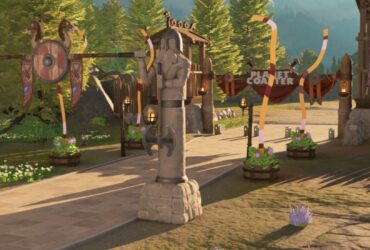“The mages had sought to usurp Heaven. But instead, they destroyed it. They were cast out, twisted and cursed by their own corruption. They returned as monsters, the first of the darkspawn.” So reads the opening monologue of Dragon Age: Origins.
For many of us, this was our introduction to Dragon Age. The game’s first scene immediately told the player, ‘You’re part of a legendary group of warriors and you’re all that’s standing between the world and certain doom.’ I highlight this because the series used to place the Grey Wardens on a pedestal, not necessarily because they were always correct or righteous, but rather because only Grey Wardens could defeat the Blight.
Join Us, Brothers and Sisters
Players who have only played Dragon Age: The Veilguard may not know, but to become a Grey Warden, a recruit needs to drink a vial of darkspawn blood. This creates a connection between the warden and the darkspawn, allowing them to track the monster’s movements and crucially, enabling them to drown in darkspawn blood without becoming tainted. As we learned in Origins, a significant number of warden recruits perish during the Joining ritual, unable to handle the toxic darkspawn blood.
The blood is poisonous to others, causing a quick and painful death to those who have been afflicted. The series has always made clear that people who come into contact with darkspawn blood have a high chance of contracting the taint. In Dragon Age 2, Aveline’s husband Wesley dies after a couple of skirmishes with darkspawn. Later in the game, Hawke’s living sibling can die from the taint if they’re brought to the Deep Roads without Anders in the party. Otherwise, they can be saved by becoming a Grey Warden.
A “Different” Blight
Now, my argument here may seem pedantic, but I think Dragon Age: The Veilguard’s treatment of the blight and taint is borderline comical and occasionally even disrespectful. Yes, the blight is “different” in The Veilguard but nobody turned around and told Rook that this ultra-infectious strand of the Blight no longer affects people, or anything along those lines. I’ll concede immediately that yes, the taint isn’t always consistently depicted. The Warden’s non-Grey Warden companions in Origins fight quite a lot of darkspawn and don’t contract the taint. It’s essentially a luck-based ailment, so you can fudge the numbers for the sake of a gameplay compromise.
Yes, there are events later in the plot that depict the taint infecting people. But there’s an enormous amount of ignorance from the characters and hand-waving by the narrative before we get to this point.
However, at the very least, there are references in Origins to the danger of the taint and of fighting darkspawn, unlike in The Veilguard where this lore point seems to have been completely discarded. I’ve seen my Shadow Dragon Rook lying knee-deep in darkspawn blood, exploding fleshy bubbles of viscera all over himself and others. In Origins, I can just about headcanon that the Warden and Alistar are using their connection to the darkspawn to protect their companions, but the taint is so egregiously approached in The Veilguard that I can’t rationalise it not killing everyone.
In a similar vein, the city that Rook doesn’t choose to protect in Act 1, either Treviso or Minrathous, becomes tainted by one of the blighted dragons. The changing of the environment is a nice touch, but the nonchalance of the residents now inhabiting a poisonous city is baffling. Put simply, you can’t live in a tainted city, exposure to the taint regularly should wipe out the city’s entire population. The residents should be aware of this, too, and should be fleeing the city en masse to escape a brutal death. You can’t live in a place where there are darkspawn around every corner.
Wasted Opportunity
It’s a shame, especially because the blight in Dragon Age: The Veilguard looks and feels visceral. One of the game’s opening missions in D’Meta’s Crossing is beautifully executed, putting you in the centre of a blight-infested village and hammering home that the blight is a living, breathing scourge that could potentially overtake all of Thedas. However, sending a group of non-Grey Wardens into the thick of it and having them emerge unscathed is just one of many instances where Rook, his group, and everyone in Thedas seem completely unconcerned with the threat of the taint.
This blight ignorance has the additional effect of minimising the role of Grey Wardens in the lore, despite how important they’ve been previously. If any group of mercenaries can fight off the Blight and darkspawn, then why have the Grey Wardens been so pivotal in defeating successive Blights throughout Theodosian history? It’s a stain on the series’ well-documented lore, which was more or less impeccably consistent until the release of The Veilguard.
If the casting aside of the well-documented effects of taint and blight were the only problem with Dragon Age: The Veilguard’s lore then I could perhaps forgive it, but the game’s writing disregards or softens so much of the series’ lore that the retconning of the series’ original adversary is all the more galling. Dragon Age: The Veilguard isn’t a bad game, but BioWare’s half-baked attempts to resolve every lore question erase some of the magic of the series that made us all fall in love with it in the first place.

Next
Dragon Age: The Veilguard Forgets The Series’ Lore
There were several pre-existing conflicts tossed aside in The Veilguard.

Next
Dragon Age: The Veilguard Forgets The Series’ Lore
There were several pre-existing conflicts tossed aside in The Veilguard.














Leave a Reply